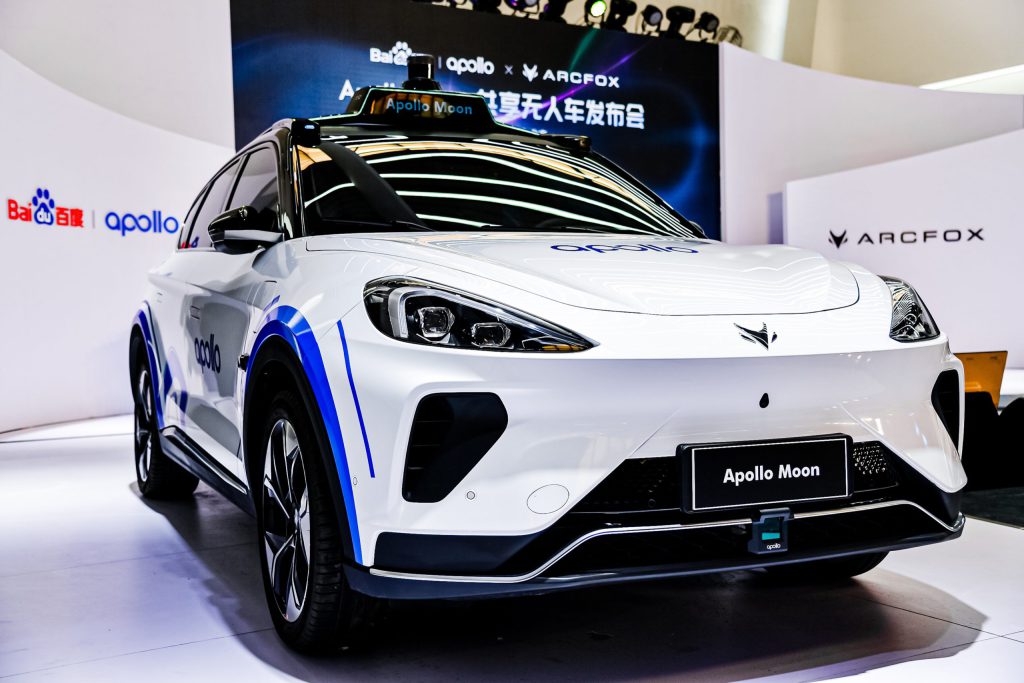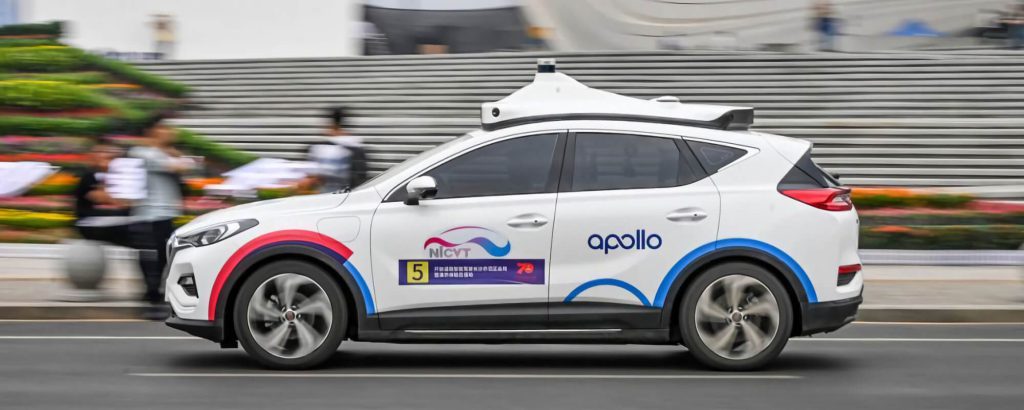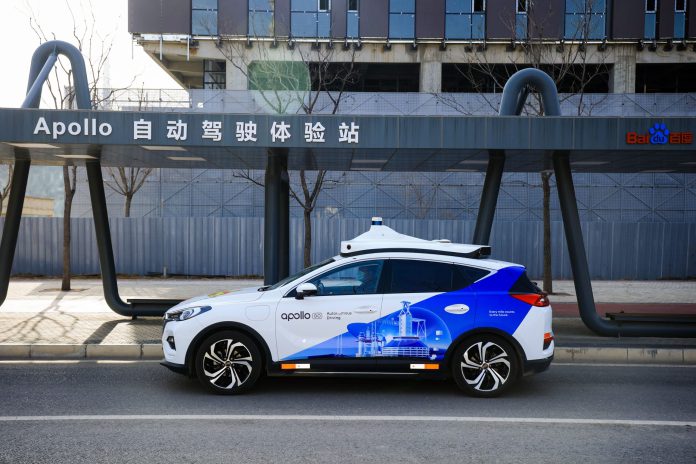The Not-So-Great Robotaxi Debacle
Imagine cruising down the bustling streets of Wuhan, the air filled with a symphony of honking horns and the occasional shout from a street vendor.
Suddenly, you spot an Apollo Go robotaxi gracefully—well, not really—navigating the chaos.
It’s a sight that’s become all too familiar in this vibrant city. But if you ask the locals, the relationship with these high-tech marvels is a bit of a rollercoaster, and not the fun kind.
The RT6 Launch: Less Money, More Problems?
Earlier this year, Baidu launched their sixth-generation robotaxi, the RT6. Now, this isn’t just any robotaxi—it costs less than a Xiaomi SU7! Yep, you heard that right.
Plans are in motion to unleash 1,000 of these bad boys onto Wuhan’s streets by the end of 2024. Currently, there are already over 500 robotaxis of various generations causing a ruckus in the city. T
he grand goal? To revolutionize urban transport. The reality? A mix of excitement, frustration, and a lot of traffic jams.

Traffic Jams and Angry Drivers
Speaking of traffic jams, let’s dive into one of the main gripes. The robotaxis have become infamous for clogging up the roads. The only comment on our previous article about the RT6 robotaxi was a complaint about traffic congestion.
Many drivers in Wuhan are up in arms, feeling the financial pinch as these autonomous vehicles steal their customers.
Taxi drivers are even petitioning the city to put a cap on Apollo Go. One taxi operator mentioned that four out of its 159 drivers have thrown in the towel since April.
Back in the day, Apollo Go’s fleet boasted an impressive average of 20 orders per day per vehicle. But now? Not so much. One Beijing ride-hailing driver lamented that he used to get 20 orders a day easily, but now he’s lucky to hit 16 or 17.
The Blame Game: Economy or Robotaxis?
So, what’s the real culprit behind the dwindling income for drivers? Some point fingers at the robotaxis, accusing them of undercutting prices. But hold your horses!
The bigger picture suggests it might be the state of the economy.
Robotaxis account for only about one percent of Wuhan’s taxi and ride-hailing fleet. They can’t possibly be the sole reason for drivers’ woes.
Complaints Galore: From Obstructions to Slow Reactions
If you think that’s the end of the story, think again. Wuhan’s robotaxis have racked up over 300 complaints on an official traffic management website.
Most of these gripes are about the robotaxis being a roadblock and taking forever to react to traffic lights. It’s like watching paint dry.
There have been countless incidents where these autonomous vehicles struggle to get into the correct lane, thanks to their less-than-stellar interactions with human drivers.
Locals have even given Apollo Go a nickname: Luobo, which means radish. In Wuhan dialect, it’s synonymous with being stupid and naïve. Ouch!
A viral video showed a robotaxi stuck because of a bag on the road. The robotaxi saw it as an insurmountable obstacle until kind pedestrians moved the bag, allowing the vehicle to continue its slow journey.

An Apollo go RoboTaxi stopped in the middle of road due to a large plastic bag. Since there was no driver in the car, the car sat there for a while, which led to traffic jam.
Speed Isn’t Everything: Or Is It?
Regular users of the Apollo Go service have a bone to pick too. They say that robotaxi journeys take longer than those with human drivers. Liu Shuang, a frequent user, mentioned that a route which takes an experienced driver 6 or 7 minutes takes Apollo Go more than 10 minutes.
Why? The robotaxi prefers main roads, which are littered with traffic lights. Plus, the driving isn’t as smooth.
Sudden braking because of pedestrians or other obstacles is par for the course.
Price Wars: Robotaxi vs. Didi
Despite the grumbles, there’s one thing that keeps people coming back to Apollo Go: the price.
On a five-kilometer route, the cost of a Didi (China’s Uber equivalent) ride is between 11 and 15 yuan (1.5 – 2 USD). But with Apollo Go, it’s just 7.5 yuan (1 USD).
Throw in some discount vouchers, and the fare can drop to a jaw-dropping 2.5 yuan (0.35 USD).
Compare that to Didi’s voucher-reduced fare of 7.5 yuan (1 USD), and it’s a no-brainer for the budget-conscious.
Safety Drivers: Going, Going, Gone
When Apollo Go first hit the streets, a safety driver was always on board, sitting in the front passenger seat. Fast forward to now, and the number of robotaxis operating without a safety driver is on the rise.
By April, 70% of these vehicles were cruising around solo, and it’s expected to hit 100% by the end of the year. This is a major cost-saving move for Apollo Go.

Cost Cutting: The RT6 Advantage
Baidu claims that the RT6 robotaxi is significantly cheaper to produce than its predecessors. At the launch, Baidu flaunted an official invoice showing the cost of a single RT6 at 204,600 yuan (28,350 USD).
Compare that to the fifth generation’s 480,000 yuan (66,100 USD), and you see why Apollo Go is so optimistic about breaking even within a year.
Currently, the rides are subsidized, meaning the company is operating at a loss.
But with costs slashed, profitability is on the horizon.
A Massive Service Area
Apollo Go’s service area in Wuhan covers a whopping 3,000 square kilometers and 3,378.73 km of actual roads. This area is home to 7.7 million people, more than half of Wuhan’s population.
While Apollo Go operates in other cities, Wuhan remains the largest service area. Baidu has grand plans to expand, aiming to cover 100 cities with robotaxis by the end of the decade.
Conclusion: The Future of Robotaxis in Wuhan
As Apollo Go continues to evolve, the relationship between Wuhan’s residents and these robotaxis is sure to remain a hot topic. The love-hate dynamic showcases both the promise and pitfalls of autonomous vehicles.
Whether you’re a fan or a critic, one thing is certain: robotaxis are here to stay, and they’re set to change the way we navigate our cities. So, buckle up and enjoy the ride—bumps and all!




































